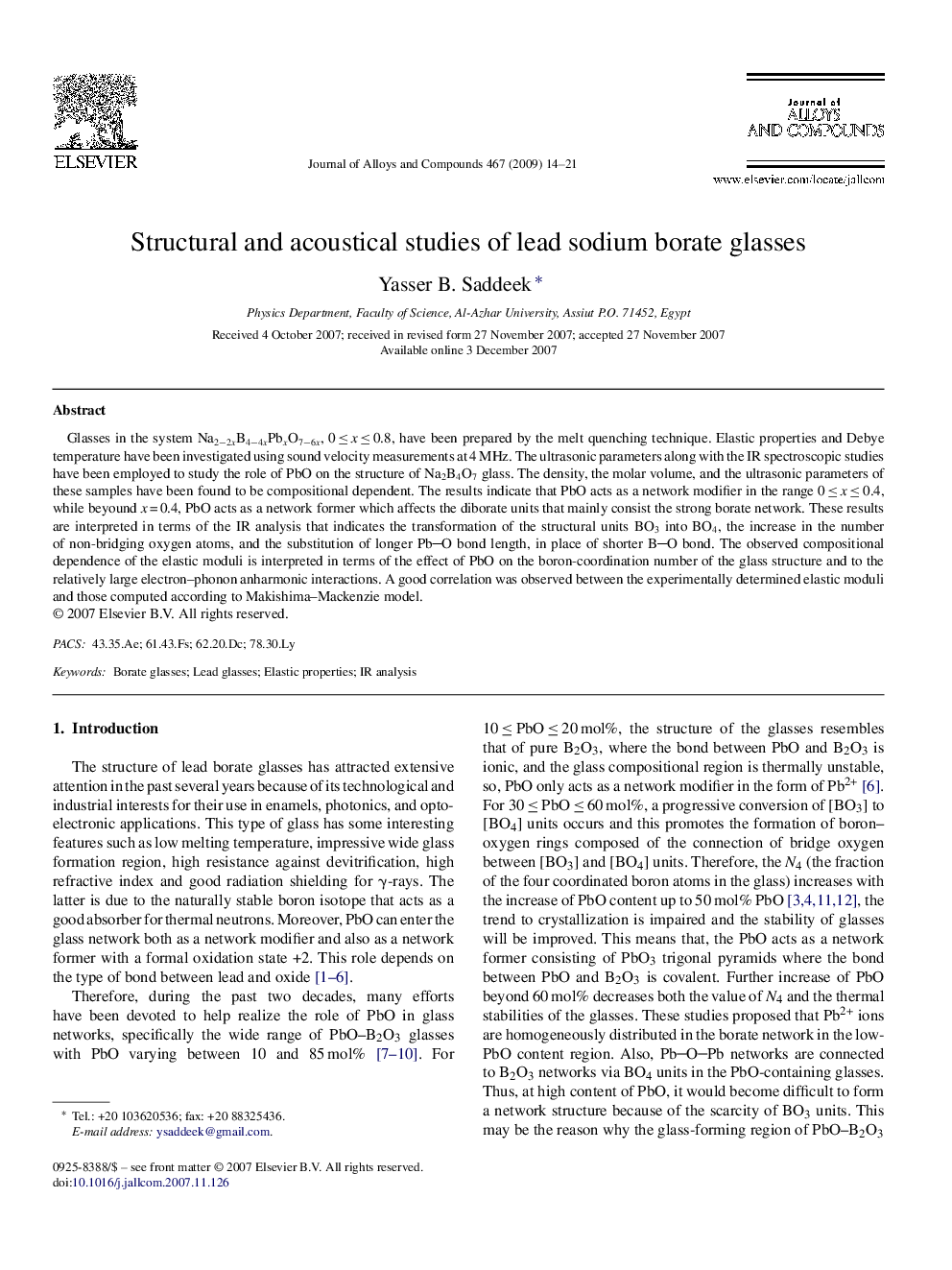| Article ID | Journal | Published Year | Pages | File Type |
|---|---|---|---|---|
| 1624061 | Journal of Alloys and Compounds | 2009 | 8 Pages |
Glasses in the system Na2−2xB4−4xPbxO7−6x, 0 ≤ x ≤ 0.8, have been prepared by the melt quenching technique. Elastic properties and Debye temperature have been investigated using sound velocity measurements at 4 MHz. The ultrasonic parameters along with the IR spectroscopic studies have been employed to study the role of PbO on the structure of Na2B4O7 glass. The density, the molar volume, and the ultrasonic parameters of these samples have been found to be compositional dependent. The results indicate that PbO acts as a network modifier in the range 0 ≤ x ≤ 0.4, while beyound x = 0.4, PbO acts as a network former which affects the diborate units that mainly consist the strong borate network. These results are interpreted in terms of the IR analysis that indicates the transformation of the structural units BO3 into BO4, the increase in the number of non-bridging oxygen atoms, and the substitution of longer PbO bond length, in place of shorter BO bond. The observed compositional dependence of the elastic moduli is interpreted in terms of the effect of PbO on the boron-coordination number of the glass structure and to the relatively large electron–phonon anharmonic interactions. A good correlation was observed between the experimentally determined elastic moduli and those computed according to Makishima–Mackenzie model.
